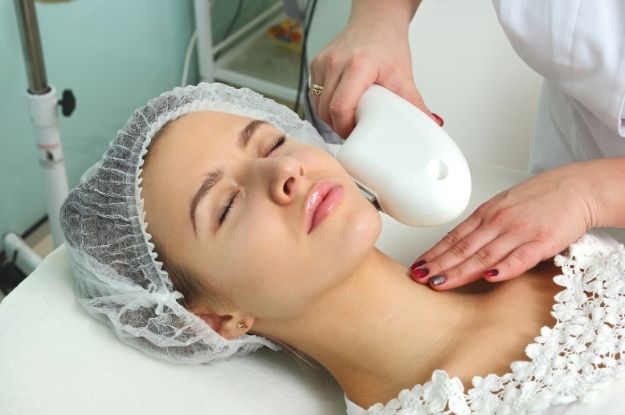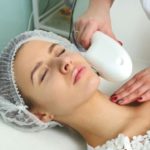Botox isn’t only a great way to appear years younger, thanks to its anti-ageing properties. Instead, its advantages go much beyond that. You shouldn’t be surprised that your interest in this miracle medicine had surged since 2000 when demand grew by an astounding 797 per cent. So, with that in mind, let’s have a look at the several advantages of Botox in Brisbane. Getting a botox done in Brisbane can cost you anywhere from $200- $700, depending upon your needs.
Retinal Disorders
Botox is used to treat a variety of diseases affecting the eyes, including the lazy eye. The use of Botox injections to treat strabismus and blepharospasm is an interesting one. Strabismus, more often known as “crossed eyes,” is a condition in which the eyes are out of alignment. This condition, which affects how the eyes move, is caused by a problem with neuromuscular control. When the eyelids shut, blepharospasm occurs. ‘Rapid eye blinking,’ maybe, is a more familiar term. Both illnesses benefit from Botox!
Sweating excessively
It’s exciting to learn that Botox may also be used to treat those with excessive perspiration in Brisbane. According to research, Botox may stop sweat glands from working, which reduces the amount of perspiration. Primary Axillary Hyperhidrosis is the medical term for this illness. Botox was licenced in Brisbane as a sweat-reducing medicine in 2004 after doctors noticed that patients who had it were less sweaty.
Treatment for Bladder Insufficiency
Botox in Brisbane has also been approved by the authorities to treat people with an overactive bladder. Botox may be given to adults over the age of 18 as a type of therapy. Botox, on the other hand, is typically the last option. Before administering Botox, other medications are tried and tested. If nothing else works, or if the patient cannot take the various forms of therapy, this may be counted upon. These illnesses are all symptoms of a solid need to pee, frequent need to pee, and wet or leaky accidents. As a result of this trial, roughly 70 per cent of women who had an overactive bladder and had Botox went from leaking five times a day to only three.
Sex-Related Issues
Botox, according to Allergan, may help with a variety of sex-related difficulties. However, the FDA has not yet authorised this claim. This includes ladies who are afflicted by sex-related agony. It’s not uncommon for women who have pelvic floor spasms or vaginal contractions to experience this. Botox may help men with premature ejaculation, among other things. There is a risk of ejaculation being delayed if Botox is injected directly into the penis. Additionally, a research experiment is now being conducted to see whether Botox may be used to treat erectile dysfunction (ED).
Relieving a Migraine
The Food and Drug Administration (FDA) authorised Botox as a therapy for persistent migraines in 2010. According to a study done 12 years before the drug’s FDA approval, patients who underwent Botox treatment had a lower incidence of headaches. Treatment consists of 31 injections into various body parts. The effects of the injections are expected to endure for three months, although further injections may be required beyond this period.
Rhythm Disorders of the Heart
Ongoing studies are looking at whether or not Botox may cause irregular heartbeats. They’re attempting to determine whether Botox in Brisbane is an effective therapy for post-open-heart surgery irregular heartbeat patterns.
Psychiatric Problems
According to preliminary clinical research, Botox may alleviate some of the symptoms linked with depression. The ‘facial feedback theory’ is the basis for administering Botox. According to this hypothesis, emotions are influenced by facial expressions. Primary depressive disorder sufferers who underwent Botox had a significant reduction in their symptoms, according to research published in 2014. Only 15% of those who received a placebo had the same effect. It is being investigated in further depth in a series of experiments. You can only hope that Botox’s advantages in treating mental illness will be determined shortly.
We have a cold hand.
At the University of Chicago’s Cold Hand Clinic, doctors use Botox to treat patients with icy hands. A needle is used to inject Botox into the hand. Constricted blood arteries are opened up due to the muscles around them relaxing (which is the cause of the poor circulation and hence the coldness). Blood may flow through the fingers and into the hands as the blood vessels relax and expand. Hands will be a little bit toastier. A three-month course of therapy is possible.
Cleft lip and palate scarring (In Babies)
Even though the FDA hasn’t authorised this, there is a wealth of scientific evidence to support this conclusion. A cleft lip is present in around 4,440 newborns per year on average. Most people have surgery to fix this problem. Some surgeons have used Botox injections to treat scars on newborns to keep the muscles in place, allowing the wounds to heal more quickly. In many instances, this has been successful.
Spasming of the neck is also on the list.
Before its widespread usage in cosmetic surgery, Botox was often used to treat neck spasms. In 2004, the research found that Botox substantially impacted patients suffering from persistent neck discomfort due to cervical dystonia (CD). With the injections of Botox, impulses that cause painful muscular tightness were silenced.





